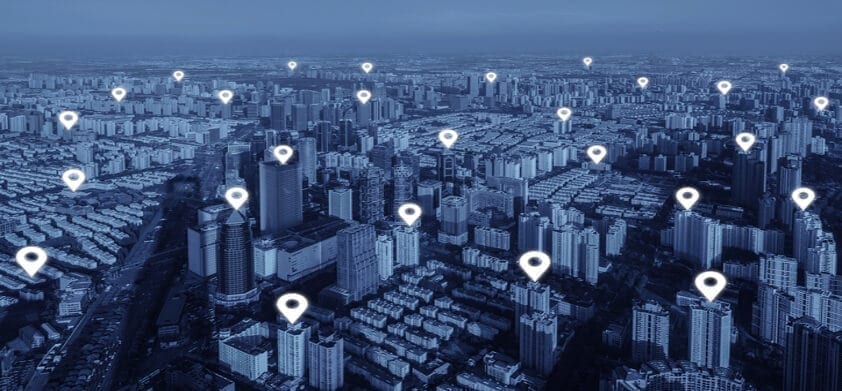If you’ve ever received a promotional offer on your phone from a business while you were in their store, you’ve experienced geofencing. Geofencing is one of the few ways that brands can use location-based marketing to interact with their audience. If you’d like to learn more about what geofencing marketing is and how your brand can use it, here’s everything that you need to know.
What is Geofencing Marketing?
Geofencing is location-based technology utilized by mobile applications. It uses GPS, Wi-Fi or cellular data to trigger a specific action when someone leaves, enters or stays in a certain geographical area. These actions consist of coupons and product announcements in the form of push notifications, text messages or targeted advertisements.
Think of a geofence as a virtual boundary around a physical location, like a store, restaurant, airport or concert venue. Users opt-in when they first download an application on their phone. The idea is to connect with customers by delivering them specific, targeted content related to their location.

The Different Forms of Geofencing Marketing
Mobile Marketing
When you step in or near a certain location, sometimes you will receive an alert about an in-store promotion. That is one of the most recognizable forms of geofencing marketing.
Ideally, by delivering deals and coupons, customers are more likely to visit a store and make a purchase. So, not only may your sales increase, but your foot traffic might also see a boost.
Social Media
Another kind of geofencing can be found on social networking sites. If you’ve ever used Snapchat and seen filters for a town or store that you’re in, that’s geofence marketing.
It can also be used to create custom-made filters for events and location-based stories. Location-specific filters, stickers, stories and other interactive content would not be possible without this technology.

3 Quick Tips about Geofencing Marketing
1. Optimizing your Geofence
In order to properly optimize your geofence for users, be sure that it isn’t entirely dependent on GPS services. Instead, try to base all of your geofencing efforts around Wi-Fi or cellular data.
Ideally, it should be optimized to account for accuracy and battery usage. You need to choose a system that perfectly balances the two. For instance, you don’t want to have a service that’s pinpoint accurate but quickly drains all of a user’s battery. You need to strike an equilibrium so it works for everyone.
2. Data Collection
The extent of your geofencing efforts shouldn’t start and end with push notifications. You should also be collecting data about your users’ offline behavior. These insights will allow you to target and reach users in a much more personalized format.

3. Spam
Geofencing is one of the best ways that location-based marketing can help brands interact with their audience. However, your notifications and alerts should not be overwhelming for users. The last thing you want to do is spam your audience. It will deter rather than attract prospective customers.
If you’re looking to reach new and improved users with location-based targeting, geofencing marketing is the way to go.


